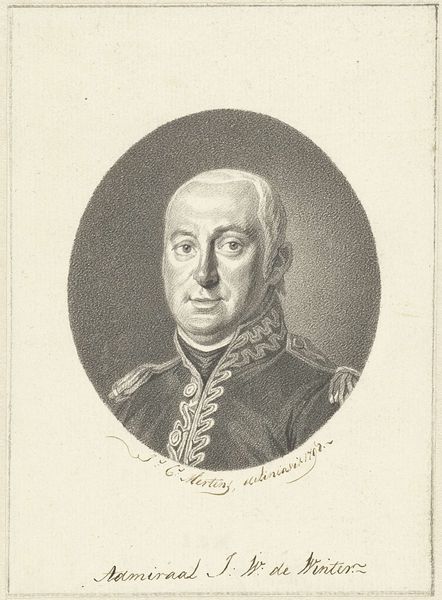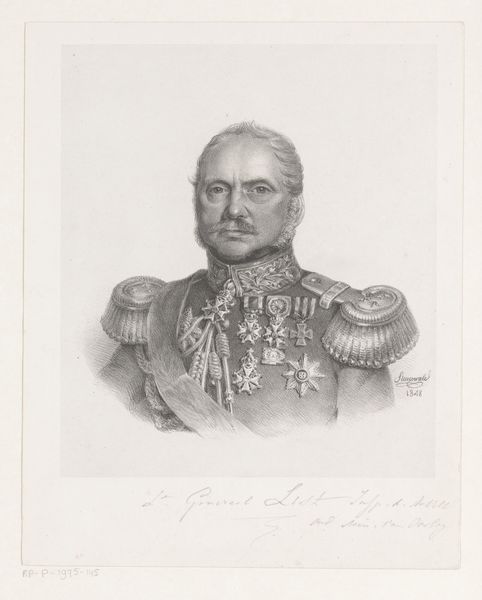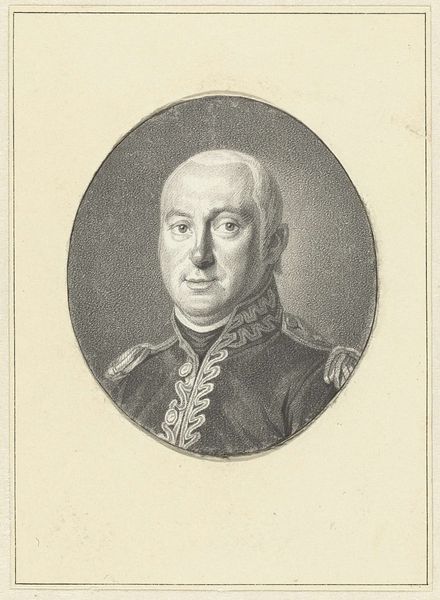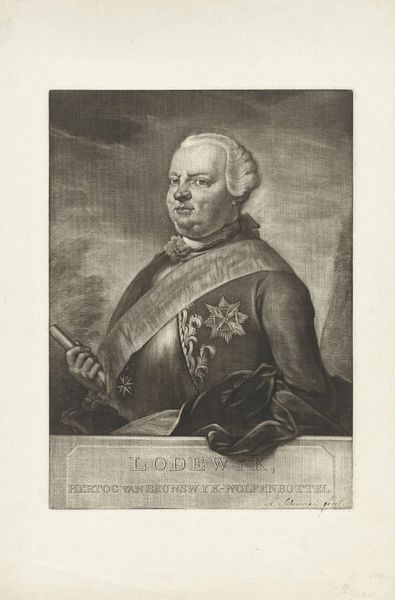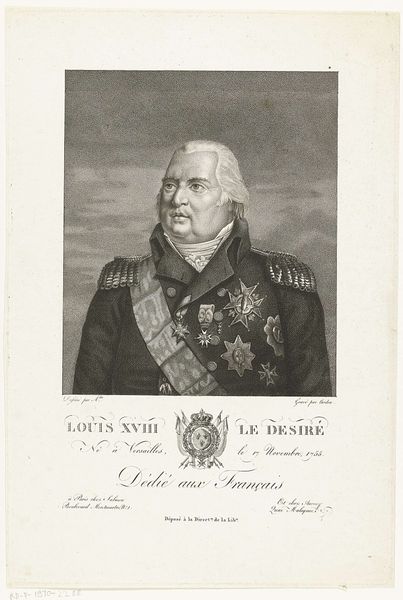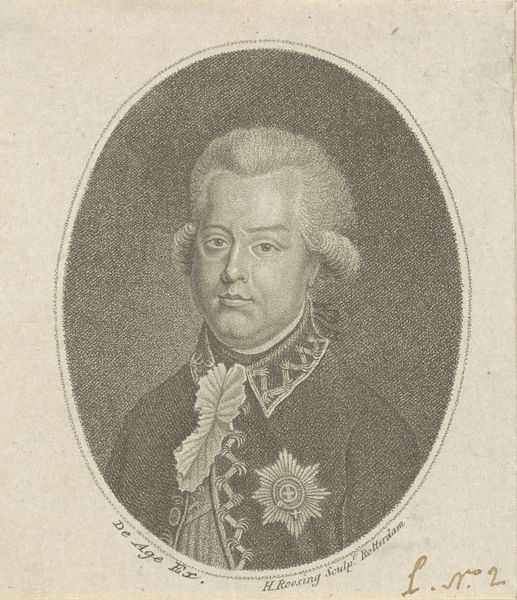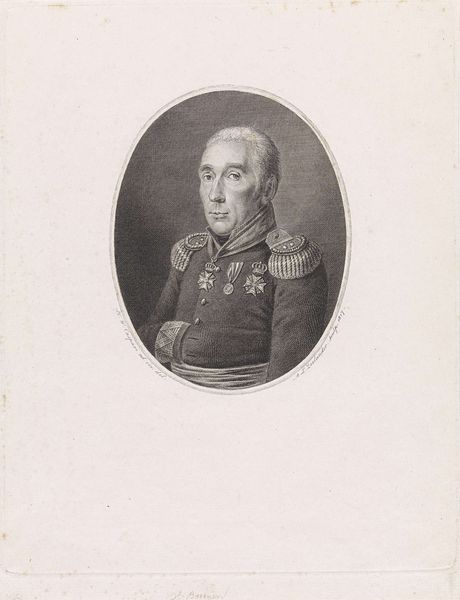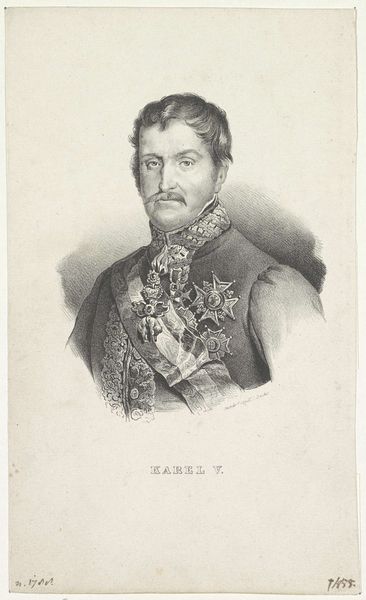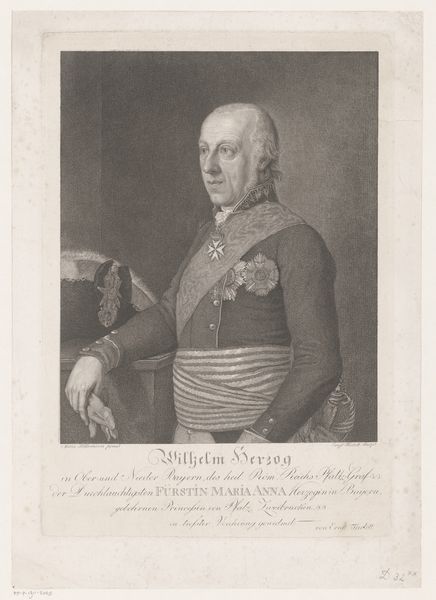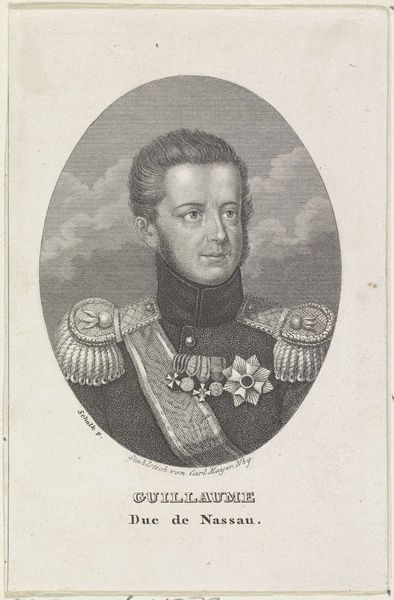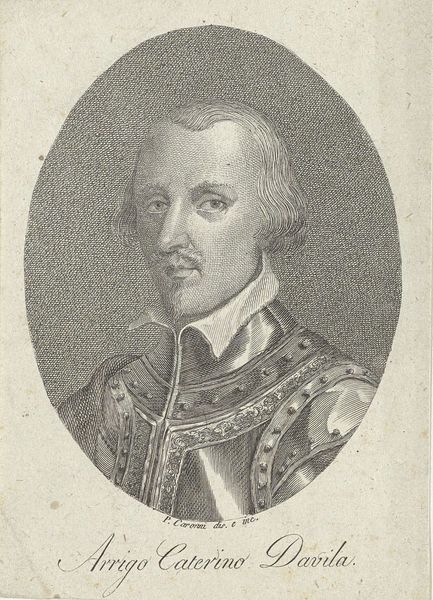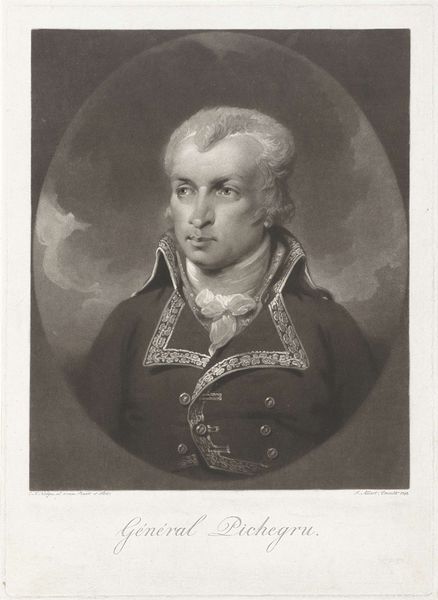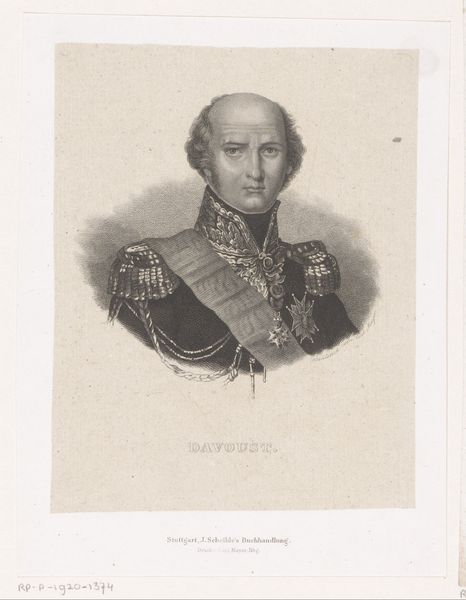
print, engraving
#
portrait
#
pencil drawn
# print
#
pencil sketch
#
historical photography
#
pencil drawing
#
romanticism
#
history-painting
#
engraving
Dimensions: height 259 mm, width 197 mm
Copyright: Rijks Museum: Open Domain
Curator: Immediately, there’s something unsettling about this portrait. The severe, almost grim expression... Editor: Indeed. What you're seeing is "Portrait of Gebhard Leberecht von Blücher," an engraving that was created sometime between 1815 and 1851. It's part of the Rijksmuseum's collection, rendered in a distinctly Romantic style. Look at how the light catches the sharp angles of his face. Curator: Yes, that high contrast gives it such starkness. The oval frame is classic, of course, hearkening back to older portraiture conventions, but it feels like it barely contains the intensity of his gaze. Note the incredibly precise, thin lines that build up to form the overall shape and structure. Editor: Right, and Blücher wasn’t just any subject. He was a Prussian field marshal instrumental in the defeat of Napoleon at Waterloo. Think about that context – this portrait comes after years of war and upheaval in Europe. The rigidity in his posture and that intense expression reflect that historical moment. He seems to carry the weight of that victory. Curator: Observe how his uniform, bedecked with medals and epaulettes, is depicted with such detail. It reinforces the image of a powerful, distinguished leader. Yet, isn't there a curious flatness, especially in the rendering of the clothing? It creates a fascinating tension with the more detailed facial features. Editor: I find that tension crucial. His carefully constructed image projects strength but also speaks volumes about the anxieties and shifting power dynamics of the era following the Napoleonic Wars. This portrait tries to encapsulate the persona of a nation-saver but leaves something important out of the picture. Curator: I appreciate how you situate this within a larger narrative. For me, the work serves as an interesting example of formalist concerns of contrasting light and shadow that can bring forth complex emotions and interpretations from even a two-dimensional surface. Editor: And for me, considering Blücher's legacy, it begs the question: how do we critically examine heroic narratives constructed during periods of conflict and nation-building? These sorts of portraits aren't just visual likenesses; they’re tools.
Comments
No comments
Be the first to comment and join the conversation on the ultimate creative platform.
